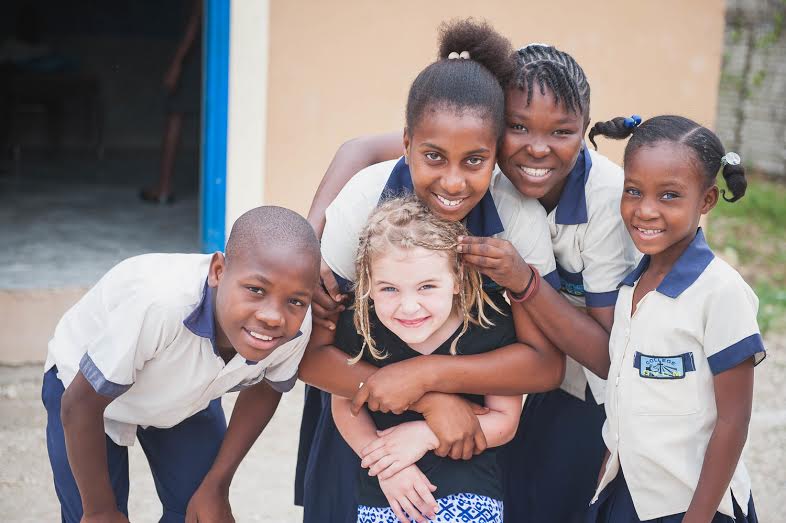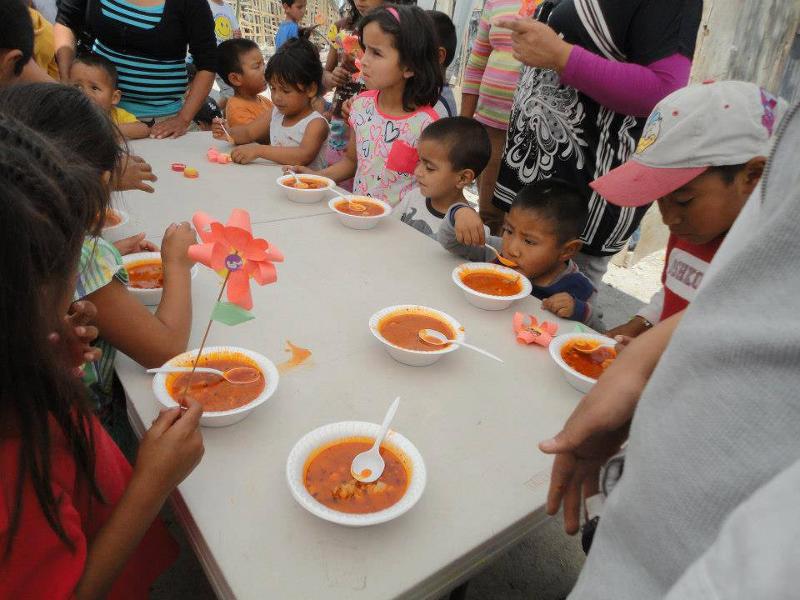I have a 1-year-old daughter. So naturally, what I want in life is a full night’s sleep. But aside from that, I want to see her grow and live out the values that are important to our family, such as generosity.
Beside the fact that the Bible tells us to be generous to those in poverty, there’s also scientific research that shows how generosity releases happiness endorphins to our brain, reduces stress, and extends our life.
How do I teach the joy of giving in a culture that says having more stuff is what makes us happy?
I asked other moms, a teacher, a children’s minister, and a school psychologist for answers, and three themes emerged.
Do it yourself – Children will watch and copy what you do.
Talk about it – Point out when others are generous, and explain how God is generous with us, and therefore, we should be generous with others.
Encourage it – Look for opportunities to help your children practice being generous and doing things for others.
Check out the age-appropriate strategies below. Many of these ideas were formative and influential for me as a child and teen, and my husband and I plan on trying them out with our family.
As a kid, earning an allowance and using the save/spend/give jars gave me a good foundation for my understanding of money.
My parents also explained to me that my money wasn’t really “my” money – it’s God’s money, and I have to steward it well (like in the parable of the talents in Matthew 5).
My family always had a sponsored child through World Vision, and as soon as I had regular income after college, I began sponsoring children on my own. My parents modeled generosity in many ways, and giving became a habit of mine.
As soon as my daughter is old enough to understand, we’ll explain that there are children around the world, who, through sponsorship, are part of our family — just like through Jesus, we’re all part of God’s family.
Pre-school (ages 3-5)
Pre-school children are little sponges, and they’re keen observers. Developmentally, pre-schoolers are ready to understand the concept of sharing and are learning how to do things for themselves: getting dressed, tying their shoes, riding a bike. Learning autonomy and initiative is key at this developmental stage. Look for ways to help your children practice becoming a cheerful giver on their own.
1 – Model generosity by being kind and generous to those in need. Idea: Keep granola bars in your car or bag to give out to the homeless, or take a meal to a sick neighbor. I have early memories of my mom stopping to be kind to people in need. She taught me a lot, just by being a generous person.
2 – Talk about generosity and point out when you see others being generous. “Oh, look how Madison is sharing her cookies. How generous of her.”
3 – When there’s a gift to give, have your child help select, wrap, and give it, so they get practice giving.
4 – Practice hospitality by welcoming other children into your home, so your kids get practice sharing their space and their toys with others.
5 – Don’t force generosity or giving, which could backfire. Instead, give positive reinforcement when you see your child sharing, giving, or being generous. Tip: School psychologist Whitney Hutcheson recommends using “I statements” to help children build awareness about how their behavior impacts others. For example, “When I saw you sharing your favorite toy with your friend, that made me feel happy.” It also works when addressing negative behavior. “When you hit your sister, that hurt my heart.”
School age (ages 5-11)
Developmentally, school age children need to develop life skills and learn competence at tasks and social interactions. Whitney recommends helping children learn how to be functional members of a community by taking on age-appropriate chores, like setting the table, putting away their laundry, clearing plates, etc.
1 – Facilitate generosity by giving your child an allowance (or have them earn the allowance by doing chores) and have them keep the money in labeled jars: save, spend, and give. My parents taught me this method when I was little, and that money-management mentality has stuck with me to this day.
2 – At Christmas, consider “adopting” a family or child through an angel tree charity. This way your child can help shop for someone else, instead of just focusing on what they want to receive.
3 – Make it their own. Have your children go through their toys and set aside the ones they don’t want to keep. Then either: Sell the toys at a garage sale and give away all or some of the proceeds to a charity, or, have your kids go with you to donate the toys to a charity.
4 – Sponsor a child in a developing country and keep the photo on the refrigerator. Involve your child in the relationship by reading and writing letters together. Learning about what life is like for children in developing countries helps put things in perspective.
5 – Find age-appropriate volunteer opportunities that you can do together as a family, such as collecting winter coats for homeless shelters, cleaning up trash at a local park, or helping an elderly neighbor with yard work.
Teens (ages 12-19)
At this stage, adolescents are developing a sense of identity and often look to parents, friends, teachers, pastors, and coaches to help them answer the question, “Who am I?” Encouraging initiative to care for others can help teens develop generosity as part of their identity.
1 – Model good household finances by explaining how you prioritize charitable giving in your monthly/yearly budget.
2 – Continue (or start) encouraging your teen to use the save/spend/give model for managing their money.
3 – If you support charities or missionaries, explain this to your teens, and involve them. Read their newsletters together. Go to fundraiser events together.
4 – Be generous together. Take your teens and some of their friends to serve at a local homeless shelter, do a service project, or even go on a mission trip. Let your teens see you being kind and generous to those in need. For example, familes often travel the world to visit their sponsored children together. What a life-changing experience! But something simple and low-cost, would be to go share a meal with the homeless, like my family did regularly when I was a pre-teen.
5 – Make it their own. Ask your teen if there is a cause or issue that stirs their heart. Help them come up with ways to do something about it by serving, volunteering, or fundraising.
On MissionFinder, we have over 1,500 ministries offering opportunities like this to serve at home and around the world. To learn more about how to support World Vision visit their profile on MissionFinder.org here.
© 2016 World Vision – Written by Rachael Boyer










